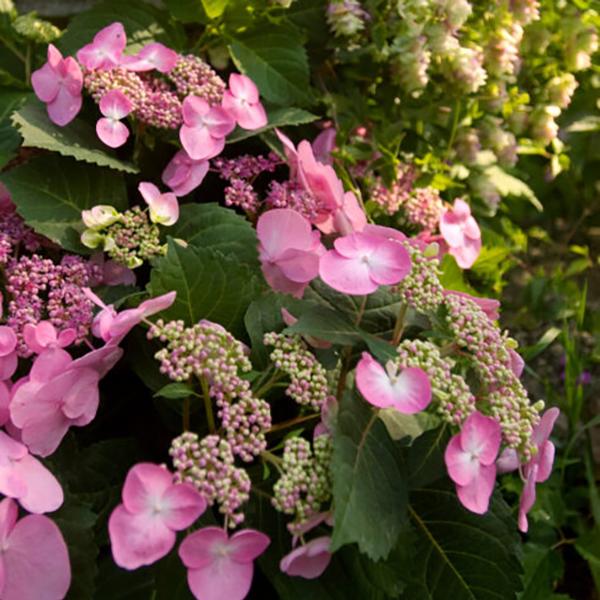
Hydrangea (/ha?'dre?nd?i?/;common labels hydrangea or hortensia) is a genus of 70-75 types of flowering crops local to southern and eastern Asia (China, Japan, Korea, the Himalayas, and Indonesia) and the Americas. Definitely the greatest varieties diversity is at eastern Asia, notably China, Japan, and Korea. The majority are shrubs 1 to 3 meters large, however, many are small trees and shrubs, while others lianas getting up to 30 m (98 ft) by climbing up trees. They could be either deciduous or evergreen, though the broadly cultivated temperate kinds are deciduous.Having been introduced to the Azores, H. macrophylla is quite typical now, particularly on Faial, which is recognized as the "blue island" because of the vast number of hydrangeas present on the island.Life cycleHydrangea blooms are produced from early spring to late fall months; they increase in flowerheads (corymbs or panicles) frequently at the ends of the stems.

Typically the flowerheads contain two types of blossoms: small non-showy flowers in the guts or interior of the flowerhead, and large, showy flowers with large colorful sepals (tepals). These showy flowers tend to be long in a band, or to the surface of the small flowers. Plants in outrageous populations typically have few to none of them of the showy flowers, while cultivated hydrangeas have been bred and picked to have significantly more of the larger type plants.There are two flower arrangements in hydrangeas with Corymb style inflorescens, which include the commonly grown "bigleaf hydrangea"--Hydrangea macrophylla. Mophead bouquets are large rounded flowerheads resembling pom-poms or, as the name suggests, the comparative mind of your mop. In contrast, lacecap flowers bear round, flat flowerheads with a center core of subdued, small plants bounded by outer wedding rings of much larger blooms having showy tepals or sepals.
The bouquets of some rhododendrons and viburnums can appear, initially, just like those of some hydrangeas.Colors and garden soil acidityIn most species the bouquets are white, however in some types (notably H. macrophylla), can be blue, red, red, light purple, or dark crimson. In these varieties the color is affected by the existence of lightweight aluminum ions which can be found or tangled up depending upon the earth pH. For H. macrophylla and H. serrata cultivars, the flower color can be dependant on the relative acidity of the soil: an acidic soil (pH below 7), will have available aluminum ions and produce flowers that are blue to purple typically, whereas an alkaline soil (pH above 7) will tie up aluminum ions and cause pink or red flowers.
This is the effect of a color change of the flower pigments in the existence of aluminium ions that can be adopted into hyperaccumulating crops.[6] Decreasing the pH of potting soils or mixes usually does not change the bloom color to blue, because these soils haven't any aluminum ions. The capability to blue or pink a hydrangea is influenced by the cultivar also. Some plants are selected for their ability to be blued, while others are bred and selected to be red, pink or white. The flower color of all other Hydrangea species is not affected by aluminum and cannot be changed or shifted. Hydrangeas also have a nickname called 'Change Rose'.
Hydrangea macrophylla 39;PIIHMI39; END SUMMr TWISTnSHOUTr HYDRANGEA

Bouquets of White Hydrangea and Dahlias with Greenery Petite Fleur
Plant H Archives Botanics Eye
of year here when native Hydrangea quercifolia is starting to fade

Tidak ada komentar:
Posting Komentar